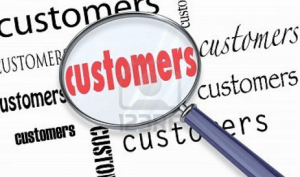The customer-centred business plan is essential for your enterprise
 For a while now we’ve been hearing how important it is to be customer-centred particularly for large corporates. Cliché terms such as “customer is king” and “customer experience is the new brand image” come to mind and other concepts such as how “it costs six times the effort to acquire a new customer when compared to keeping an existing one”.
For a while now we’ve been hearing how important it is to be customer-centred particularly for large corporates. Cliché terms such as “customer is king” and “customer experience is the new brand image” come to mind and other concepts such as how “it costs six times the effort to acquire a new customer when compared to keeping an existing one”.
From these statements it is clear that the customer has become a very important component of the equation when it comes to running a successful business. Businesses are now trading in an era where customers have become more empowered through platforms such as social media where a movement for or against your brand can be started in an instant. The risk that comes with dissatisfied customers has thus increased exponentially and suggests that businesses which were just about the numbers should reconfigure and place customer at the centre of respective value propositions. This line of thinking should not only be considered by the larger and more established concerns, but should also be prioritised by start-ups, as well as micro, small- and medium- sized enterprises as well. This line of thinking should be thought through even in the development of the enterprise’s business plan.
Granted, when starting your small-business resources are limited and you’re more concerned with ensuring that your product or service works and will bring in the required revenue. Most times you’re chasing super profits based on the debts incurred and the personal risks you’ve taken to ensure your business comes to life and goes from red to black in record time. Because of this you think of investing in aspects such as customer journey maps, ideal customer experience, customer engagement, service design and user design as a preserve of the more established organisation. I do agree that the associated fees with setting this up, including the infrastructure to monitor customer experience through satisfaction ratings is significant. However, if you’re playing the long game and want your business to withstand the test of time, be resourceful and find ways of developing a customer strategy together that builds into your organisation’s overall business strategy.
To explain customer centricity, I use the example of our local grocery store during my formative years. As a child, when I went to the local grocery store, the owner of the shop and his attendants knew my name, who my parents were and products we typically bought on a weekly basis. All of the shop’s staff never referred to me as a customer/client but thought of me as an extension of their business; someone they loved to have come through the store, exchange a few stories (including advice), assist me to pack products that we often bought, ring up the costs in the shortest possible time and send me on my way with a big smile on my face, including a message to greet my parents when I got home. Admittedly, I frequented the shop because of convenience but the approach to interacting with us was very client-centred with each customer being treated as an individual instead of a label/statistic.
In light of the above example, it is critical to have a more humane, instead of mechanical approach to treating your customers. From where I stand, we can learn a lot from our local grocery store, barber shop and taxi drivers in terms of how best to treat existing and prospective customers. In an era where individuality is critical we should move away from the traditional business-to-business (B2B) and business-to-customer (B2C) client serving models. The model that best fits serving an empowered customer is the business-to-individual (B2I) client serving model.
From a B2I perspective, elements that need to be prioritised include knowing your customer well – name, purchase trends, likes, dislikes, hobbies, birthday, birthdays of loved ones, habits and the list goes on. The trick is to avoid being intrusive because some people still want to have at length relationships with their product and service providers. Know your customer well enough to understand that they’re the at-length type and serve them in that way.
Another important aspect is knowing how to manage each individual’s dissatisfaction. We’re in that unfortunate period where serving the customer better has become every business’ priority and the difference between you and your competitor’s customer experience is marginal. One way to differentiate yourself is how good you are at managing dissatisfaction. Response times, continuous feedback until the problem is resolved, owner’s visit to customer to apologise for the mistake made. Managing dissatisfaction could be the asset your business can leverage to endear your existing customers to you and convert them to advocates.
I conclude by pointing out that the B2I approach increases your cost to serve. There’s a lot of investment that goes into knowing your customers at an individual level. But from a strategy perspective, incorporate this approach into your business culture and commit to doing it from the time that you have a small client base, sustaining it as you grow and evolve into a bigger organisation. A number that should stay in the back of your mind is that it costs six times as much to acquire a new customer when compared to keeping existing one. So in the greater scheme of things that cost to serve isn’t as high as you think it is.
By James Maposa, Director Consultant
Intergroup Brand Science (formerly Interbrand Africa)
